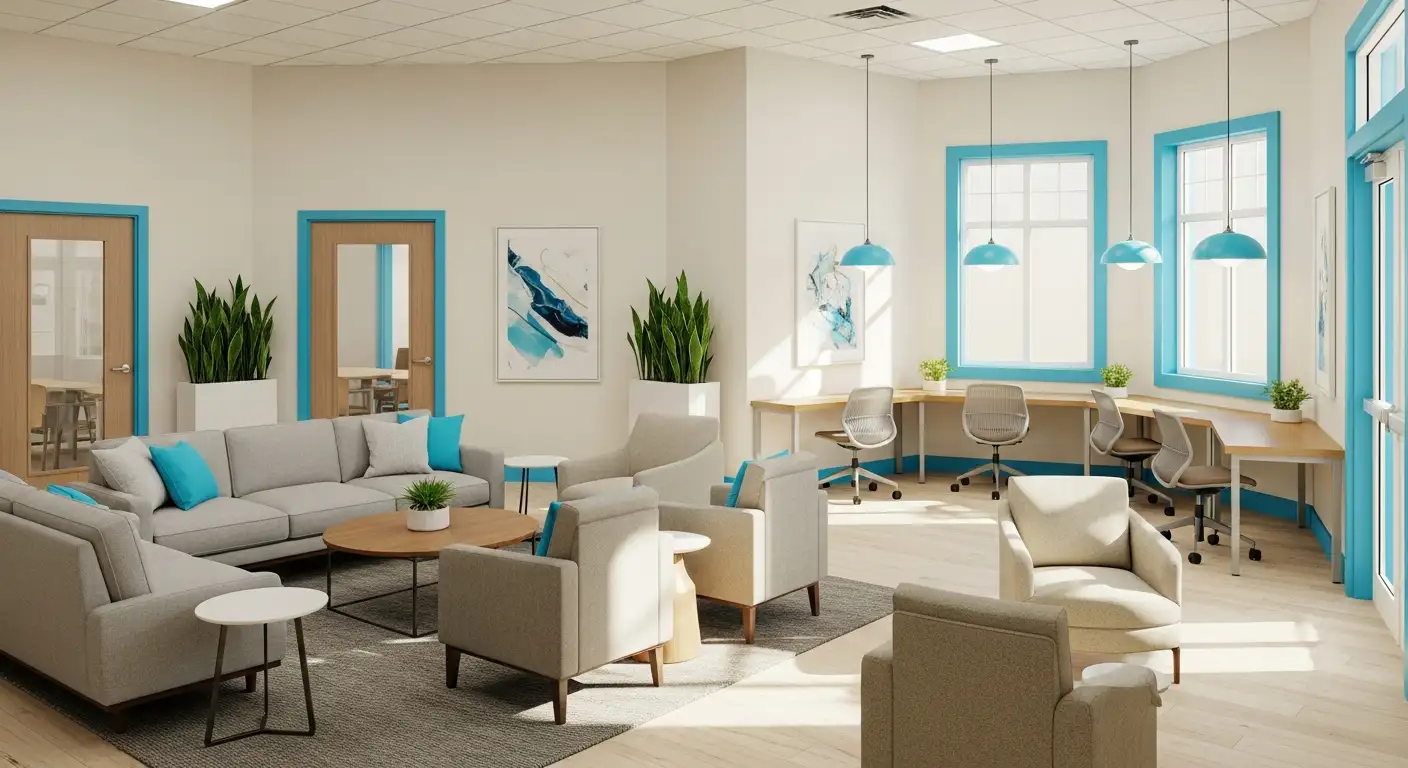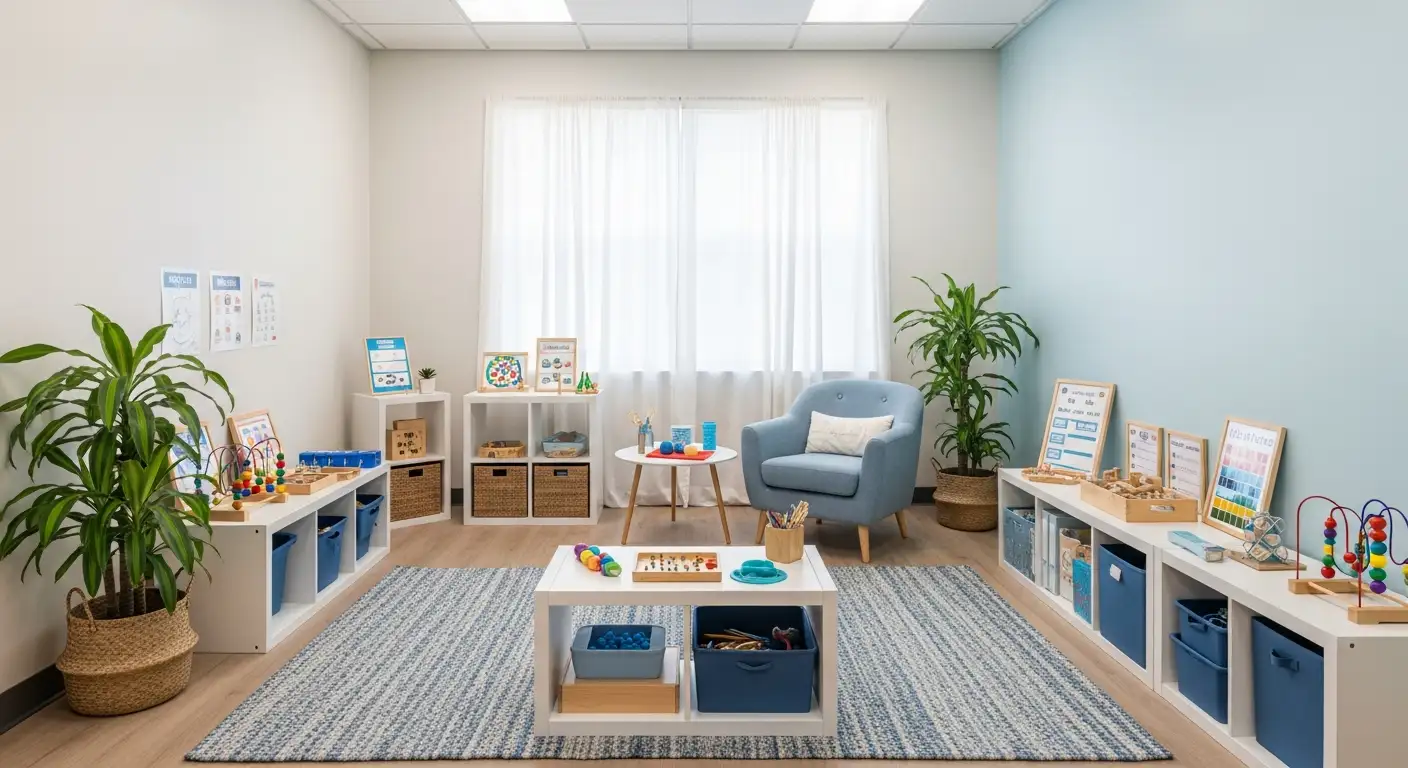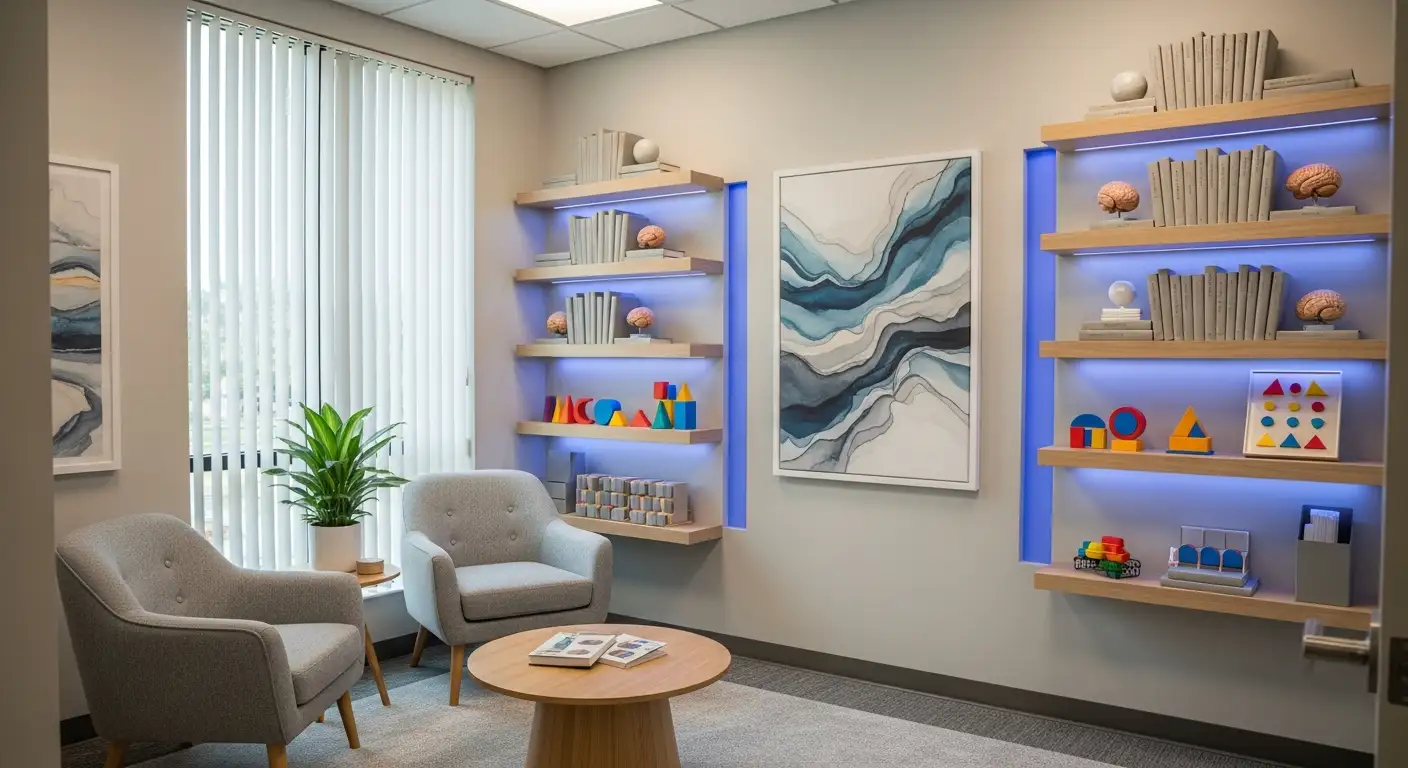Understanding ABA Therapy and Its Foundations
Applied Behavior Analysis (ABA) therapy is a scientifically backed approach designed to assist individuals with autism spectrum disorder (ASD) in developing critical life skills and managing behaviors. Implemented through various settings, including in-home and clinic-based environments, ABA therapy offers distinct advantages tailored to individual needs. This article delves into the unique aspects of in-home and clinic-based ABA therapy, highlighting their differences, advantages, and how therapy programs are personalized to maximize outcomes for children with autism.
What is ABA Therapy and How Does It Support Individuals with Autism?
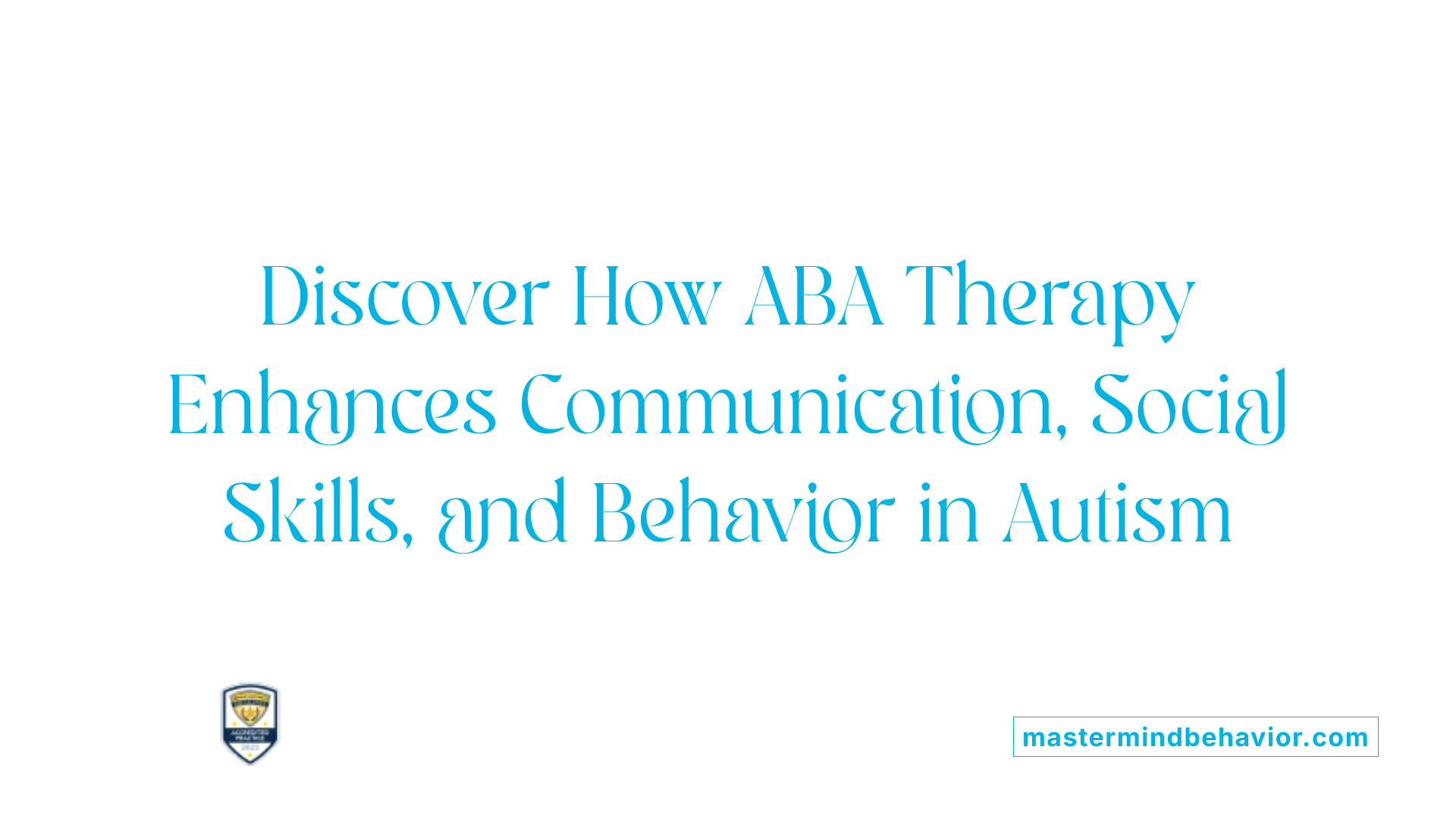
What is Applied Behavior Analysis (ABA) therapy and how is it used to support individuals with autism?
Applied Behavior Analysis (ABA) therapy is an evidence-based approach that uses scientific principles to understand and change behaviors. It supports individuals with autism by promoting positive behaviors such as communication and social skills while reducing challenging behaviors like aggression or self-injury. ABA relies on core techniques including reinforcement, prompting, and shaping to teach new skills effectively. Therapy is tailored specifically to each individual’s needs and can be delivered in settings like homes, schools, or clinics.
What are the main goals of ABA therapy for individuals on the autism spectrum?
The primary goals of ABA therapy are to increase helpful behaviors and improve essential skills such as communication, social interaction, self-care, and academic abilities. It also aims to decrease harmful or disruptive behaviors to enhance daily functioning. ABA focuses on fostering independence, skill generalization across environments, and improving overall quality of life for individuals with autism.
Who typically provides ABA therapy and what qualifications do these providers have?
ABA therapy is delivered by professionals including Board Certified Behavior Analysts (BCBAs), Board Certified Assistant Behavior Analysts (BCaBAs), registered behavior technicians (RBTs), and behavior therapists. BCBAs and BCaBAs hold degrees in behavior analysis or related fields and are certified by the Behavior Analyst Certification Board (BACB). RBTs work under BCBA supervision, delivering therapy directly to clients. This team collaborates to design, implement, and adjust individualized ABA programs.
How is an ABA therapy program customized for each individual with autism?
Customization begins with a detailed assessment of the individual's skills, needs, and challenges. Based on this, an individualized treatment plan is created targeting specific goals such as improving social skills or reducing problematic behaviors. Data collection guides ongoing adjustments to therapy strategies, ensuring effectiveness. Families play an active role, participating in therapy sessions and reinforcing skills at home to maximize progress.
Core Differences Between In-Home and Clinic-Based ABA Therapy Settings

What Is In-Home ABA Therapy?
In-home ABA therapy is conducted in the child's natural environment, usually their home. Therapy takes place in familiar surroundings, which helps children feel more comfortable while practicing daily living skills like bedtime routines, mealtime behaviors, and dressing. These sessions are often provided by Registered Behavior Technicians (RBTs) under the supervision of Board-Certified Behavior Analysts (BCBAs).
What Is Clinic-Based ABA Therapy?
Clinic-based ABA therapy occurs in a structured, controlled environment designed specifically for learning. These centers have specialized resources such as sensory toys and educational materials tailored to the child's therapy goals. Therapy teams include multiple specialists, providing opportunities for peer interaction, socialization, and multidisciplinary support.
How Do the Environments Differ and What Are the Implications?
The home environment offers comfort and convenience, allowing real-time practice of daily skills and eliminating travel time for families. However, it may lack resources and social opportunities found in clinics. In contrast, clinics provide a distraction-reduced setting with a wide range of materials and peers, promoting faster skill acquisition and social interaction. Some children may find clinics less comfortable due to the unfamiliar environment.
How Does Parental Involvement Differ?
Parents tend to be more directly involved in in-home therapy, observing and participating in sessions, which helps reinforce positive behaviors outside of therapy hours. In clinic settings, parental involvement may be less direct but still essential, with opportunities to engage during sessions and through communication with therapists.
| Setting | Location | Environment Characteristics | Parental Involvement | Social Opportunities |
|---|---|---|---|---|
| In-Home ABA | Child's natural setting | Comfort, real-life daily skills, less equipment | High, direct participation | Limited peer interaction |
| Clinic-Based ABA | Structured clinic | Controlled, resource-rich, distraction-reduced | Moderate, through sessions | High, with peers and specialists |
Advantages and Limitations of In-Home ABA Therapy
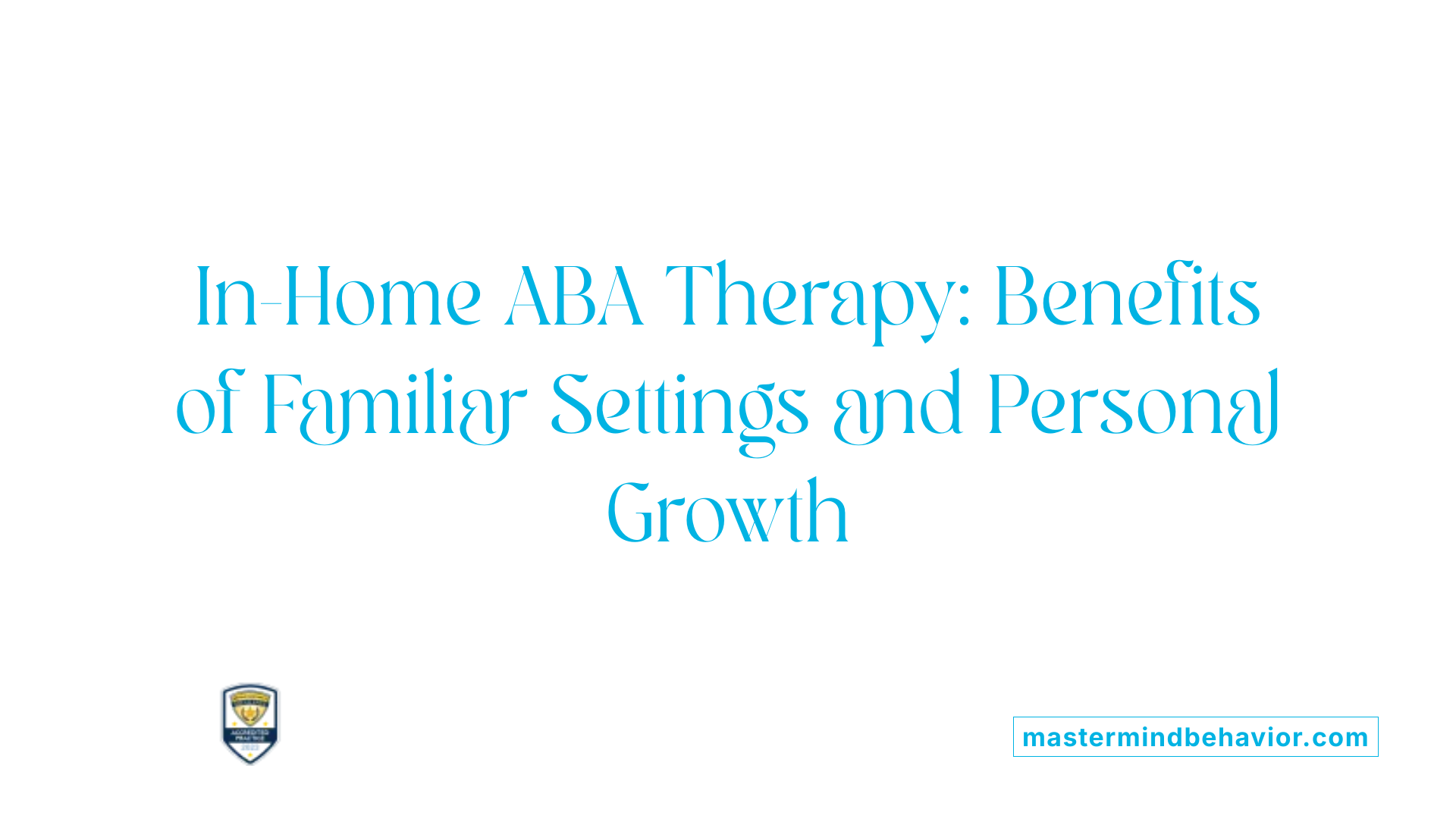
Comfort and familiarity of natural environment
In-home ABA therapy takes place in a child's everyday surroundings, such as their home, which provides a comfortable and familiar setting. This helps children feel at ease, making them more receptive to learning and practicing new skills.
Real-time practice of daily living skills
Therapists can work on real-life routines like bedtime, mealtime, and dressing directly within the home. This allows skills to be practiced in the setting where they naturally occur, improving generalization and effectiveness.
High parental involvement and convenience
Parents and family members can easily participate and reinforce positive behaviors throughout the day. The convenience of not needing to commute to a clinic benefits families and promotes consistent therapy engagement.
Limitations such as resource availability and social opportunities
While in-home therapy offers many benefits, it may have fewer specialized resources like sensory toys or educational tools compared to a clinic. Additionally, opportunities for social interaction with peers are limited, which can affect development of social skills.
In summary, in-home ABA therapy blends comfort and convenience with the opportunity for hands-on skill building, though families may need to consider the trade-offs related to resource access and socialization.
Advantages and Limitations of Clinic-Based ABA Therapy

Structured Environment Designed to Reduce Distractions
Clinic-based ABA therapy is provided in a controlled, purposefully designed space that minimizes external distractions. This structured setting helps children with Autism Spectrum Disorder focus better during sessions, facilitating more effective and accelerated learning.
Access to Wide Array of Therapeutic Resources
Clinics are typically equipped with an extensive range of materials and sensory toys that can be tailored to individual therapy goals. This rich resource environment supports diverse interventions aimed at improving communication, social, academic, and behavioral skills.
Opportunities for Peer Socialization and Multidisciplinary Involvement
One significant advantage of clinic-based therapy is the availability of peer interaction opportunities. Children can engage in social and team-building activities, which are key for practicing communication and social skills. Additionally, clinics often involve a team of specialists—including Board-Certified Behavior Analysts (BCBAs)—allowing for a comprehensive, multidisciplinary approach.
Limitations Such as Transportation Challenges and Potential Discomfort
Despite its benefits, clinic-based ABA therapy may present challenges. Transportation to and from the clinic can be difficult, especially for families living far away. Moreover, some children may find the unfamiliar clinic environment uncomfortable, which could impact their engagement and progress during sessions.
These factors should be considered when choosing the most suitable ABA therapy setting, weighing the structured benefits of clinics against practical and emotional considerations.
The Role of Parental Involvement in Different ABA Settings
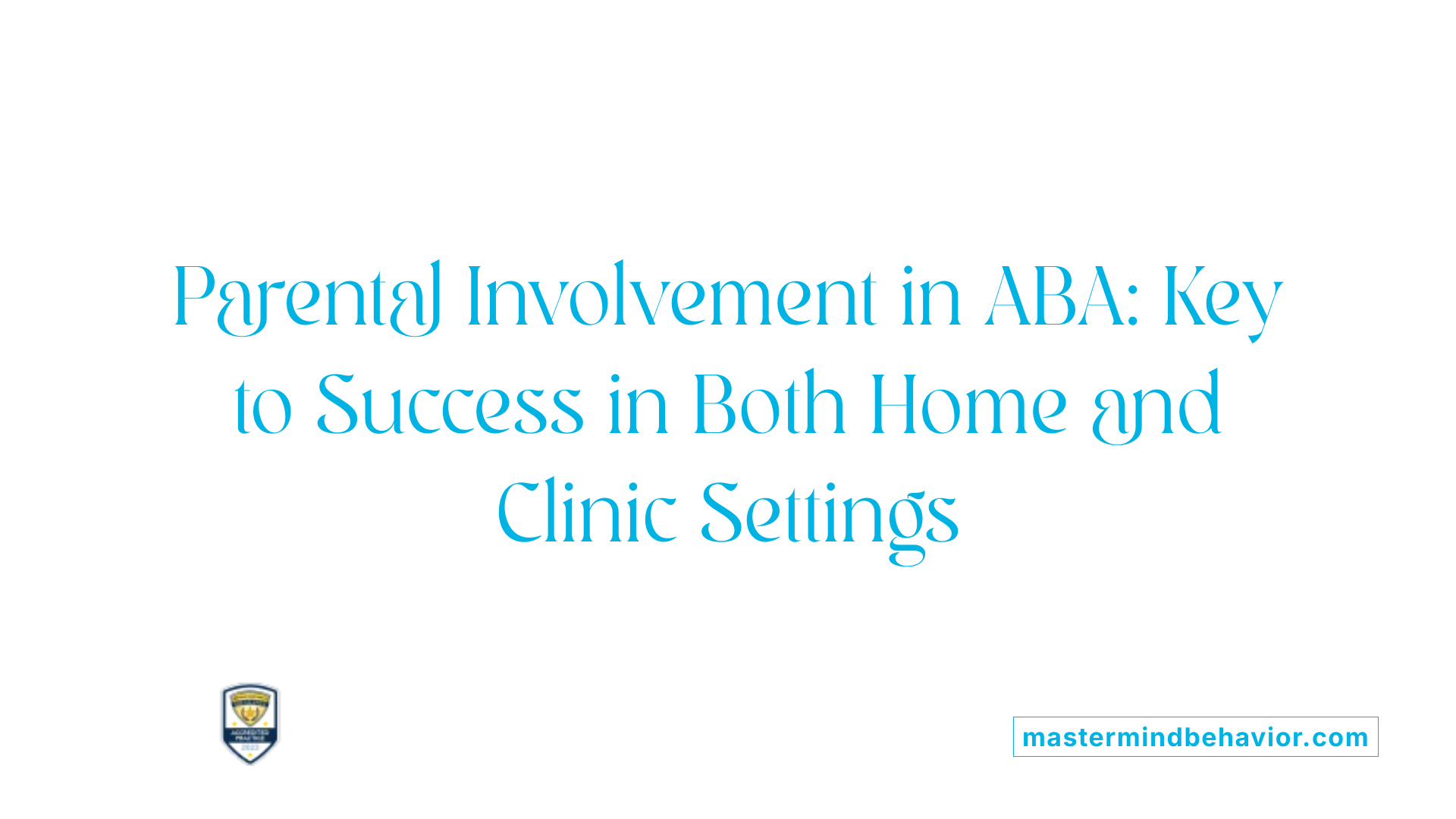
How does parental involvement differ between in-home and clinic-based ABA therapy?
Parental involvement is notably more direct and frequent in in-home ABA therapy. Because sessions take place in the child’s natural environment, parents are often present and actively participate in therapy activities. This proximity allows parents to observe techniques firsthand and learn how to reinforce positive behaviors throughout daily routines like mealtime or bedtime.
What roles do parents play in sessions and behavior reinforcement at home?
In in-home ABA therapy, parents frequently serve as co-therapists by practicing learned strategies between sessions. Their engagement helps generalize skills across settings and reinforces consistent behavior management. Parents also provide valuable insights about the child’s daily habits and progress, assisting therapists in customizing approaches for maximum effectiveness.
How is parental involvement characterized in clinic-based ABA therapy?
While parents may not attend every clinic session, their role often involves collaborating with therapists during designated meetings to discuss progress and strategies. They are important for practicing new skills at home but generally have less direct interaction during therapy hours in a clinical setting compared to in-home treatment.
What impact does parental involvement have on therapy outcomes?
Research and clinical experience show that higher parental involvement can enhance ABA therapy outcomes. Active parental participation supports skill generalization and promotes consistency in behavior interventions. Whether in-home or clinic-based, encouraging families to engage in treatment processes contributes positively to a child’s development.
Overall, parental engagement is a valuable component of ABA therapy, with in-home settings offering greater opportunities for hands-on involvement, and clinic-based therapy involving collaborative participation focused on reinforcement at home.
Flexibility and Integration: Combining In-Home and Clinic-Based ABA Therapy
How can therapy settings transition as a child's needs evolve?
ABA therapy offers flexibility to transition between in-home and clinic-based settings as a child's developmental and behavioral needs change. Families might start with in-home therapy to focus on daily living skills in a familiar environment. As the child gains skills and comfort, incorporating clinic-based sessions can introduce structured socialization and peer interactions.
What evidence supports using combined therapy approaches?
Research highlights the effectiveness of blending in-home and clinic services. A 2017 study published in the Journal of Autism and Developmental Disorders demonstrated that children receiving a combined approach showed significant improvements in adaptive behaviors. Multi-setting therapy leverages the strengths of both environments, enhancing generalization of skills.
What are the benefits of multi-setting interventions?
Combining settings allows children to practice skills across different contexts. In-home therapy emphasizes comfort and personalization, boosting family involvement and daily routines. Clinic-based ABA provides access to specialized resources, structured learning, and peer interaction opportunities, fostering social skills and teamwork.
What practical factors should families consider?
Families should weigh logistics such as convenience, transportation, and insurance coverage. In-home therapy can be more accessible and less disruptive, while clinic sessions offer focused interventions in controlled spaces. Transitioning between settings requires coordination with therapists to ensure consistent and complementary treatment goals.
Choosing the Right ABA Therapy Setting for Your Child
Both in-home and clinic-based ABA therapy offer significant benefits for children with autism, each addressing unique needs through tailored environments and approaches. In-home therapy excels in comfort, convenience, and real-world skill application with close family involvement, while clinic-based therapy provides structured settings rich in resources and socialization opportunities. Understanding these differences helps families make informed decisions aligned with their child's developmental goals and preferences. Moreover, flexible models that combine both settings can optimize progress and foster adaptive behavior across contexts. Ultimately, the best choice depends on the individual child's needs, family circumstances, and the professional guidance of qualified ABA providers.
References
- ABA Therapy In-Home vs At a Center: 5 Key Differences
- In-Home vs. In-Clinic ABA Therapy
- ABA: In-Home vs. In-Clinic vs. In-School | Circle Care
- Applied Behavior Analysis (ABA)
- How ABA Therapy Can Improve Your Child's Life
- The Controversy Around ABA
- ABA Intervention for Autism: Effective Strategies That Work
